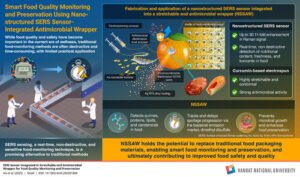Wednesday, 3 December 2025
Food labels aren’t helping Americans reduce national obesity levels
Food labels aren’t helping Americans reduce national obesity levels America is stereotypically known as an obese country, and the most recent report released by the Center for Disease Control and…

Food labels aren’t helping Americans reduce national obesity levels
America is stereotypically known as an obese country, and the most recent report released by the Center for Disease Control and Prevention Friday proves this stereotype. In 2016, the CDC reported that 39.8 percent of U.S. adults were obese, a sizeable jump from two years ago when it was 33.7 percent.
While people need to be more self-aware and make healthy decisions, it’s time that Americans turn their attention to the products that create this problem. This means reading nutrition labels, which are often located at the back of all packaged foods, far away from the fun, colorful branding that people love.
These labels try to inform consumers about what they are eating, but they are filled with complex jargon that might be unfamiliar to the average person.
One would think that simplifying the nutrition label would lead to more informed decision-making, but the Food and Drug Administration recently delayed a decision to update the requirements for food labels. Although the exact reason for this delay is unknown, public health should be the priority, and this delay is only making things worse.
The decision would force companies to accurately and clearly represent health facts.
The FDA’s decision is critical because three out of five consumers admit they can’t understand the information on nutrition labels, according to Nielsen, a consumer statistic researcher.
Located in the tiny charts are the calories, nutrients and ingredients list – usually filled with scientific names that can’t be pronounced, let alone understood – along with a bunch of percentages and numbers that are far too much for anyone who isn’t a medical expert to understand.
Disodium inosinate, disodium guanylate and monosodium glutamate are far too difficult to know off the top of one’s head without some serious research.
The FDA states that disodium inosinate and monosodium glutamate — also commonly known as MSG — are flavor enhancers, but what does that really mean? There have been reports about headaches, skin symptoms and sweating when consuming foods containing MSG, but nothing conclusive has been found, according to Mayo Clinic.
With such weird ingredients, it’s easy to dismiss the added sugars and high-fructose syrup as it’s too taxing to research it which ,in large consumption, can lead to health problems like weight gain, and type 2 diabetes.
It’s also easy to misjudge the serving size of a product, and accidentally — or intentionally — eat far more than what’s recommended.
Keeping a healthy diet means understanding what and how much one consumes. With labels that seem like puzzles, it’s no surprise that the population is so unhealthy.
These complicated labels, the study suggests, might be causing people to consume more meat, eggs, nuts and grains than they are supposed to and less vegetables, dairy and fruit, according to a 2017 study conducted by the United States Department of Agriculture. It’s not unreasonable to ask for simpler and more accessible information on foods.
Hopefully, the FDA can be pushed to rescind its delay on the decision to revamp labels, but until then, the health of the public lies in the hands of those willing to grab an encyclopedia instead of a soda.
Technology
Bel Group to replace Babybel cellophane with recyclable paper worldwide by 2027
Dec 01, 2025 | Company News
Korean researchers unveil 2-in-1 SERS wrapper with antimicrobial food protection
Nov 27, 2025 | Food
Food Testing
Korean researchers unveil 2-in-1 SERS wrapper with antimicrobial food protection
Nov 27, 2025 | Food
More Popular
Tempo Group acquires Spring Gully Foods to safeguard iconic Australian brand
Dec 02, 2025 | Australia
MATAN unveils automated food security system to reach 40Mn Nigerians
Dec 02, 2025 | Africa
Tetra Pak announces new executive leadership team appointments effective December 2025
Dec 02, 2025 | Appointment





